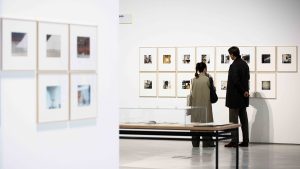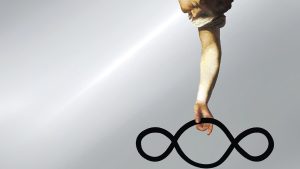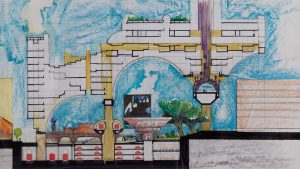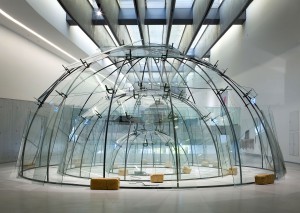- special reduced price € 10
single ticket valid until 17 April, for all ongoing exhibitions, due to the refurbishment of 2 galleries
- full price € 15 at the box office - € 14 online
- reduced price € 12 at the box office - € 11 online
– for young people aged between 18 and 25 (not yet turned 25);
– for groups of 15 people or more;
– La Galleria Nazionale, Museo Ebraico di Roma ticket holders;
– upon presentation of ID card or badge: Accademia Costume & Moda, Accademia Fotografica, Biblioteche di Roma, Centro Sperimentale di Cinematografia, Enel (for badge holder and accompanying person), FAI Fondo Ambiente Italiano, Feltrinelli, Gruppo FS, IN/ARCH Istituto Nazionale di Architettura, Sapienza Università di Roma, LAZIOcrea, Palazzo delle Esposizioni, Amici di Palazzo Strozzi, Accademia Nazionale di Santa Cecilia, Scuola Internazionale di Comics, Teatro Olimpico, Teatro dell’Opera di Roma, Teatro di Roma, Università degli Studi di Roma Tor Vergata, Youthcard;
– upon presenting at the ticket office a Trenitalia ticket to Rome purchased between 27 November 2024 and 21 April 2025 - open € 18
valid for one year from the date of purchase
- free
– minors under 18 years of age;
– myMAXXI cardholders;
– on your birthday presenting an identity document;
– upon presentation of EU Disability Card holders and or accompanying letter from hosting association/institution for: people with disabilities and accompanying person, people on the autistic spectrum and accompanying person, deaf people, people with cognitive disabilities and complex communication needs and their caregivers, people with serious illnesses and their caregivers, guests of first aid and anti-violence centres and accompanying operators, residents of therapeutic communities and accompanying operators;
– MiC employees;
– journalists who can prove their business activity;
– European Union tour guides and tour guides, licensed (ref. Circular n.20/2016 DG-Museums);
– 1 teacher for every 10 students;
– AMACI members;
– CIMAM International Committee for Museums and Collections of Modern Art members;
– ICOM members;
– from Tuesday to Friday (excluding holidays) European Union students and university researchers in art history and architecture, public fine arts academies (AFAM registered) students and Temple University Rome Campus students;
– IED Istituto Europeo di Design professors, NABA Nuova Accademia di Belle Arti professors, RUFA Rome University of Fine Arts professors;
– upon presentation of ID card or badge: Collezione Peggy Guggenheim a Venezia, Castello di Rivoli Museo d’Arte Contemporanea, Sotheby’s Preferred, MEP – Maison Européenne de la Photographie;
Casa Balla | until 27 April 2025
- full price ticket € 18
- reduced price ticket € 15
for groups of 12 people in the same tour; myMAXXI membership card-holders; registered journalists with valid ID
- reduced price ticket € 12
under 14 years of age
- free ticket
disabled people + possible accompanying person; minors under 3 years of age (ticket not required)
Collection
MAXXI’s Collection of Art and Architecture represents the founding element of the museum and defines its identity. Since October 2015, it has been on display with different arrangements of works.
other upcoming events
20 Apr 2025 12.00 pm
guided toursGuido GuidiCol tempo, 1956-2024
20 Apr 2025 04.30 pm
MAXXI for familiesOggetti incredibili e come progettarli
27 Apr 2025 05.00 pm
CreAzioneLifeby Anton Corbijn
30 Apr 2025 07.30 pm
music performanceOkkyung Lee & Rashad Becker
8 May 2025 06.00 pm
talkSpiritualitàdi Michelangelo Pistoletto e Antonio Spadaro
11 May 2025 12.00 pm
guided toursStop DrawingArchitecture beyond Representation
14 May 2025 06.00 pm
books at MAXXIPaleoestetica. Alle origini della cultura visualeby Michele Cometa















































Expanded Video presents an Italian preview of a number of video works and live performances by Jacob TV, Masbedo, Martha Colburn and People Like Us (aka Vicki Bennett).?
Organized in collaboration with the Music for Rome Foundation, the series arises from the confrontation and interaction between different forms of creativity that define a common idiom in which listening and seeing become analogous and equivalent episodes.?The works of the selected artists, in which the diverse idioms fuse and integrate perfectly, are linked by a shared emancipation from the ties and conventions of the individual media. Sound becomes narration and the image dissolves in an ever-different rhythm.
19 May, 20.30
Martha Colburn – DOLLS VS. DICTATORS
Thollem McDonas: piano; Greg Saunier: drums
MAXXI, Gallery 5
Martha Colburn mainly works by animating two-dimensional images: cuttings from newspapers, images drawn from the most diverse media and figures specifically created by her, old 8 and 16 mm film to create a fantastic world in which the anxiety of the real is always present.
MARTHA COLBURN – Dolls VS Dictators, 2010 – 11′
LAST PERFORMANCE
24 May, 21.00?
People Like Us – GENRE COLLAGE ?
Auditorium Parco della musica, Teatro Studio?
People Like Us, through the use of sounds and images familiar to us succeeds in producing a new emotional location, an intentional violation of the narrative continuity, assembling scenes that no longer correspond to a tranquil cinematographic sequence.